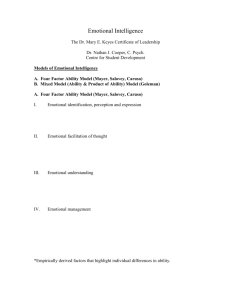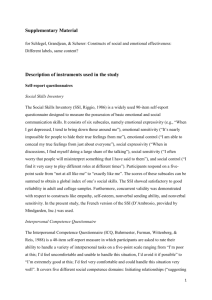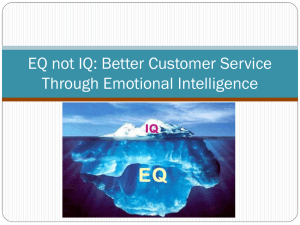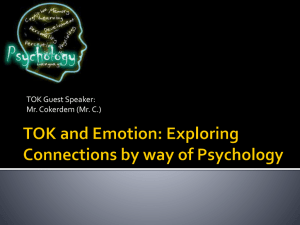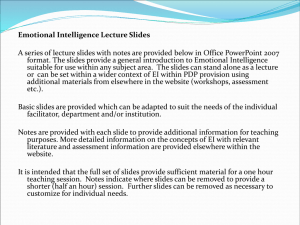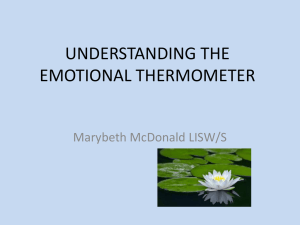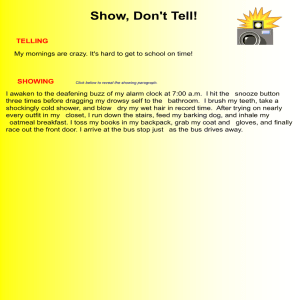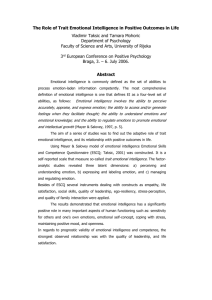Lassk
advertisement
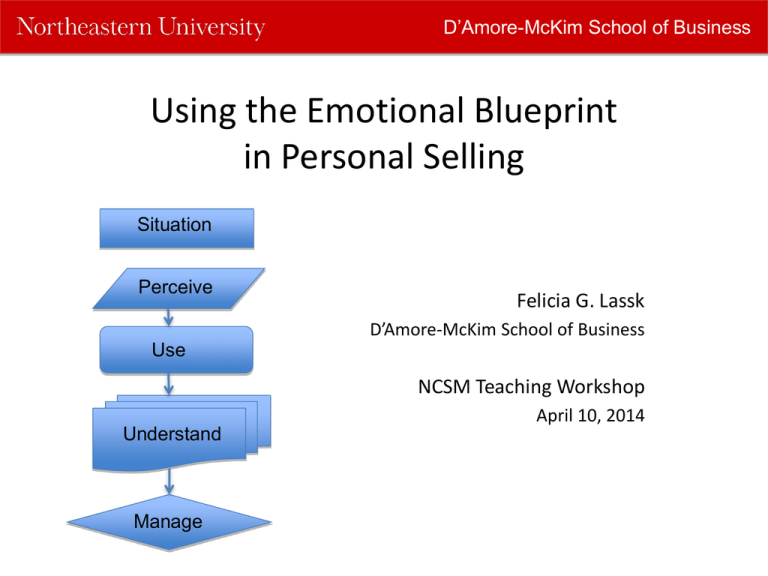
D’Amore-McKim School of Business Using the Emotional Blueprint in Personal Selling Situation Perceive Felicia G. Lassk D’Amore-McKim School of Business Use NCSM Teaching Workshop April 10, 2014 Understand Manage D’Amore-McKim School of Business Presentation Agenda • • • • Emotional Intelligence and Personal Selling The Abilities Model of Emotional Intelligence The Emotional Blueprint Training Activities D’Amore-McKim School of Business Emotional Intelligence and Personal Selling • Higher EI leads to higher sales performance (Boyatzis et al., 2012; DeeterSchmelz & Sojka, 2003; Caruso & Salovey, 2004; Kidwell et al., 2007; Kidwell et al., 2011; Pettijohn, Rozell & Newman, 2010; Rozell, Pettijohn & Parker, 2006; Verbeke et al., 2008) • Higher EI leads to higher job satisfaction (Lassk & Shepherd, 2013) • EI positively correlated with customer orientation (Rozell, Pettijohn & Parker, 2004) • Ability to appraise others’ emotions moderates the relationship between adaptive selling and customer-oriented selling on sales performance (Kidwell, McFarland & Avila, 2007) • EI positively related to creativity (Agnihotri et al., 2014; Lassk & Shepherd, 2013) D’Amore-McKim School of Business Emotional intelligence is "the ability to monitor one's own and others' feelings and emotions, to discriminate among them, and to use this information to guide one's thinking and action". Salovey & Mayer, 1990 D’Amore-McKim School of Business Mayer & Salovey, 1997 1 PERCEIVE 4 MANAGE USE UNDERSTAND 3 2 D’Amore-McKim School of Business Perceive Happy Perceive Emotion Anger Surprise Contempt Sadness Disgust Fear D’Amore-McKim School of Business Use Use Emotion D’Amore-McKim School of Business Use Use Emotion D’Amore-McKim School of Business Understand Emotion What if? Analysis • A client is frustrated. He has repeatedly asked you for more information. He is more annoyed that you’ve ignored his request. The client will feel which emotion? Disgust Sadness Anger D’Amore-McKim School of Business Manage Manage Emotion D’Amore-McKim School of Business The Emotional Blueprint Situation Caruso & Salovey, 2004: 245-251 Use Understand Manage • What happened? What did you want to happen? • Was there a better way to have handled it? • How satisfied were you with the outcome? • How satisfied do you think the other person was with the outcome? • What could you have done differently? • Did your feelings guide you in the right direction? Did you ignore them or pay attention to your gut feel? • What were your feelings telling you about this situation? D’Amore-McKim School of Business • Emotional Blueprint Activities – Review a movie excerpt • The Pursuit of Happyness, Death of a Salesman, Glengarry Glen Ross, Jerry McGuire, Tin Men – Role plays scenarios – Story telling – Case study – Past experience – Apply “on the ground” D’Amore-McKim School of Business Thank you!

